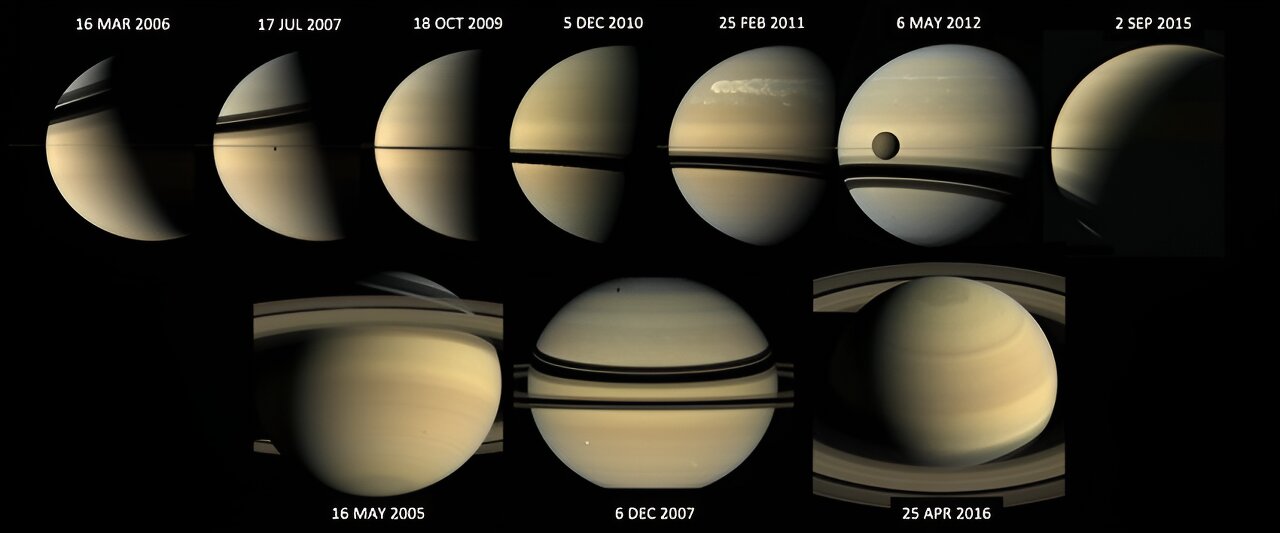While the UK has been experiencing warm autumnal weather, a team of planetary scientists has found that Saturn’s late northern summer is experiencing a cooling trend, as huge planetary-scale flows of air have reversed direction as autumn approaches.
The new observations have also provided a last glimpse of Saturn’s north pole, with its enormous warm vortex filled with hydrocarbon gases, before the pole begins to recede into the darkness of polar winter.
This interplanetary weather report is thanks to new images analyzed by a team led by the University of Leicester from the JWST and published in Journal of Geophysical Research: Planets. They have provided new insights into the changing seasons on the massive outer planet, famous for its icy rings.
Like Earth, Saturn has an axial tilt and experiences seasons in the same way. However, Saturn takes 30 years to orbit the sun, so the seasons last for 7.5 Earth-years. Northern-hemisphere summer on both worlds is now coming to an end. While Earth is heading for northern autumn equinox in September, Saturn is heading for northern autumn equinox in 2025, which means the north poles of both planets are heading for extended periods of polar winter.
The Leicester team used the MIRI instrument on JWST to study Saturn’s atmosphere in infrared light, which allows them to measure the temperatures, gaseous abundances, and clouds from the churning cloud tops to regions high in the atmosphere known as the stratosphere. The MIRI instrument splits the infrared light into its component wavelengths allowing scientists to see the fingerprints of the rich variety of chemicals within a planet’s atmosphere.
2023-09-13 06:48:03
Article from phys.org
